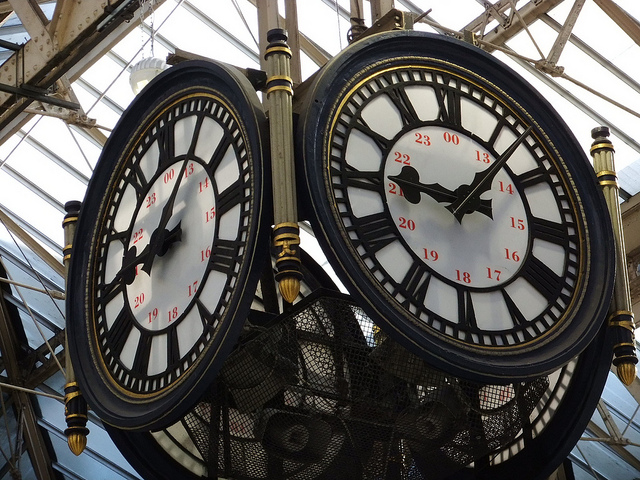 (Photo By Flickr User oatsy40)
(Photo By Flickr User oatsy40)
According to timeanddate.com. the term “spring forward, fall back” is meant to trigger your memory to set your clocks forward one hour in the Spring at the start of DST, and one hour back in the fall when DST ends.
A different way to remember which direction to set your clock for Daylight Saving Time (DST) is that in the Spring, you bring out (or forward) the garden furniture (clocks are set 1 hour ahead), and in the fall you put them back (clocks are set 1 hour back).
The expressions “spring ahead” and “spring up” are also used to describe the action of setting clocks one hour ahead for the start of DST in the Spring. These terms are mainly used in the USA and Canada.
Daylight Savings Time Fun Facts:
“March Forward”
“March forward” is another term used to remind people about the DST start dates in the Northern hemisphere, like the USA, Canada and Europe, where it starts in March.
“Gain 1 Hour, Lose 1 Hour”
Other phrases associated with the DST start date include “push the clocks forward”, “turn the clocks ahead”, and “shift the clocks forward”. There is also the expression, “lose an hour here, gain an hour there”, which describes the start and end of DST.
“Daylight Time”
“Daylight Time”, refers to the DST schedule itself. Other variations are “Daylight Savings” or “Daylight Saving”.
Records have shown that the phrase “spring forward, fall back” has been in use at least as far back as the early 20th century. For example, the Heppner Gazette-Times (Heppner, OR) on October 28, 1928, printed a notice stating “Daylight Saving Time ends this Sunday, October 31st. Remember to set your clocks back one hour, ‘Spring Forward, Fall Back!’”.
All in all, before you get your rest on Saturday night, don’t forget to set your clock forward, ‘Tis The Season!





